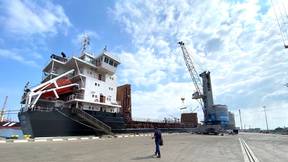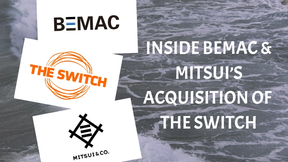The Arctic: Scientists Aim to Improve Sea Ice Predictions' Accuracy, Access

Sea ice predictions have improved markedly since the founding of an international forecasting and monitoring network 14 years ago.“These forecasts are quite encouraging in their increasing accuracy,” said Uma Bhatt, an atmospheric sciences professor at the University of Alaska Fairbanks Geophysical Institute. Bhatt spoke about the Sea Ice Prediction Network at the American Geophysical Union’s annual meeting last month.As the amount of sea ice in the Arctic declines, thins and becomes more mobile…
UAF’s GINA Provides a Guiding Hand in Arctic Ocean Research
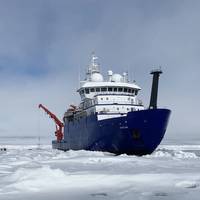
The research vessel Sikuliaq navigated among and around the chunks and slabs of Arctic sea ice above Alaska for several weeks on two voyages this fall, breaking through frozen slabs when it had to, just as its sturdy hull is designed to do. It's now on a third trip.The Sikuliaq, a 261-ft. ice-capable research vessel operated by UAF, pauses in the Arctic Ocean in June 2021 during its fifth year of operation. A few months later, it traveled farther north than ever before — almost 500 miles beyond Point Barrow.Satellite imagery produced at the Geographic Information Network of Alaska…
Exploring All Too Real Maritime Risks
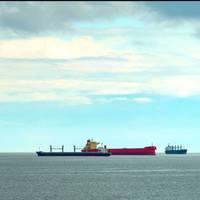
The 11th Annual Maritime Risk Symposium: A Virtual Event Exploring All Too Real RisksThe past year has been as impactful for the world’s maritime transportation xystem as it has been for the rest of society. From the Suez Canal to the Arctic and beyond, human, technology and environmental events disrupted maritime activity. And the pandemic highlighted supply chain vulnerabilities in many ways, from mariners quarantined aboard vessels to port congestion due to COVID-driven surges in e-commerce.
Winter Sea Ice in Bering Sea Reached Lowest Levels in Millennia
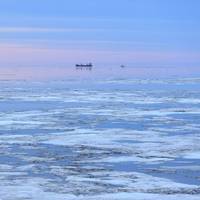
The Bering Sea ice cover during the winters of 2018 and 2019 hit new lows not seen in thousands of years, scientists reported on Wednesday, adding to concerns about the accelerating impact of climate change in the Arctic.Satellite data provides a clear picture of how sea ice has changed over the last four decades in the region between the Arctic and northern Pacific oceans. Beyond that, the only ice records available were those recorded in ship logs and other observations.So scientists turned to peat land, which holds organic compounds from plants dating back millennia, on the remote St.
Oil, Fishing, Tourism: Alaska Economy Faces Triple Hit from Coronavirus

The U.S. state of Alaska is so far distant from the worst medical ravages of the coronavirus pandemic, but its economy is in critical condition. Alaska is especially vulnerable because it depends on oil, tourism and fisheries – basic industries that are reeling from the global coronavirus pandemic – and the state government gets most of its revenue from investment earnings that have now evaporated."Alaska is experiencing a perfect storm, a most terrible trifecta, the hat trick from hell," said state Senator Natasha von Imhof, co-chair of the Senate Finance Committee, at a hearing Saturday.
UAS Announces New Marine Transportation Scholarship
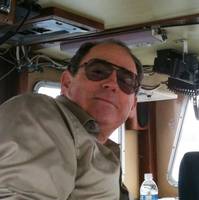
As tourism increases so will the demand for trained, licensed employees and sea pilots navigating the Inside Passage and a new University of Alaska Southeast (UAS) scholarship endowment was inspired to do just that.The Captain Michael A. Clinkscales Maritime Scholarship has been established to support UAS students enrolled in marine transportation courses. Fellow sea pilots led the cause to raise more than $38,000 in honor of “Clink,” a man who was known to inspire and encourage others in the maritime trades.
R/V Nanuq Joins U. of Alaska Fleet
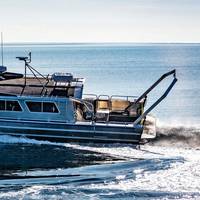
The College of Fisheries and Marine Science at the University of Alaska Fairbanks added a new Armstrong Marine-built research vessel to its fleet, Nanuq, which arrived in Seward, Alaska, ealiers this summer.The Port Angeles, Wash.-based boatbuilder designed the 40-foot aluminum hulled boat and Pacific Power Group, working closely with Armstrong, fit the vessel with a pair of Volvo Penta D6 engines that each deliver 330hp. The engines are paired with Aquamatic outdrives and Volvo…
Armstrong Marine Delivers R/V to University of AK
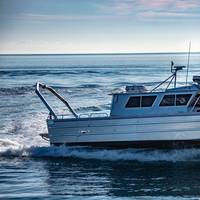
The 40’ x 13’ research vessel Nanuq recently entered service for the University of Alaska Fairbanks College of Fisheries and Ocean Sciences. In a competitive solicitation process last year, the University selected Armstrong Marine’s proposal to design and build the vessel.Nanuq is customized for research and teaching operations. The monohull features 28 – 32 knot cruise speed, hydraulic A-frame, overnight accommodations for five, full-service galley, head, Northern Lights 5kW diesel generator…
USCG VADM Fagan Weighs in on Arctic Plans
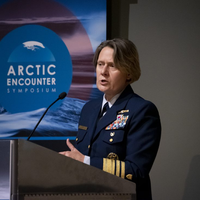
The U.S. Coast Guard’s Pacific Area commander discussed the service’s new Arctic Strategic Outlook, Polar Security Cutters and innovation efforts to improve maritime domain awareness in the high latitudes April 26, 2019, during the Arctic Encounter Symposium in Seattle.During her keynote speech at the symposium, Vice Adm. Linda Fagan said, “The tyranny of distance and the harsh Arctic climate pose significant challenges to agencies charged with providing maritime safety and security to all Americans, including the hundreds of villages and thousands of seasonal workers in the U.S.
Coast Guard Discusses Developing Arctic Role
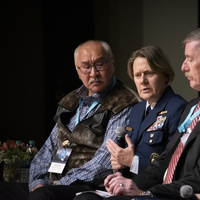
The U.S. Coast Guard's Pacific Area commander discussed the service's new Arctic Strategic Outlook, Polar Security Cutters and innovation efforts to improve maritime domain awareness in the high latitudes Friday during the Arctic Encounter Symposium in Seattle.During her keynote speech at the symposium, Vice Adm. Linda Fagan said, “The tyranny of distance and the harsh Arctic climate pose significant challenges to agencies charged with providing maritime safety and security to all Americans, including the hundreds of villages and thousands of seasonal workers in the U.S.
LRAUV: Arctic Oil-Spill-Mapping Robot Put to the Test
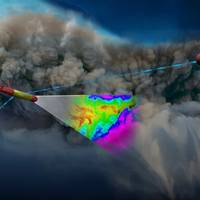
As commercial shipping and energy activities picks up in the Arctic region, the prospect of accidental oil spills in this pristine environment remain a concern. In response, the U.S. Department of Homeland Security (DHS) is taking the lead – through the U.S. Coast Guard – to develop a subsea robotic system to map and report on spills.“Because of ice coverage and the tyranny of distance, it is difficult to get resources and assets up in the Arctic in a quick manner,” said Kirsten Trego, Executive Director of the Coast Guard’s Interagency Coordinating Committee on Oil Pollution Research.
Rapp Marine to Equip New OSU Research Vessel
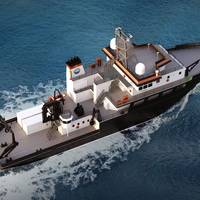
Rapp Marine said it has been selected by Gulf Island Shipyard, LLC, as the Overboard Handling System Single Source Vendor (OHS SSV) for Oregon State University’s (OSU) 193 ft x 41 ft multi-mission Regional Class Research Vessel (RCRV), with the option of two additional vessels. Funding for the RCRV project is provided by the National Science Foundation (NSF), and the contract design of the RCRV was developed by Glosten. The first vessel is currently under construction at Gulf Island Shipyard in Houma, La.
Training Program Seeks to Develop Alaskan Shipbuilders
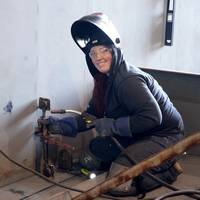
A new shipbuilding and repair training program in Alaska aims to develop an advanced manufacturing workforce comprised of state residents. Shipbuilder and repairer Vigor has teamed up with the maritime workforce development network Maritime Works for a public, private and philanthropic initiative called Advancing Alaskan Workers, which will train Alaska’s next generation of advanced manufacturing workers. The initiative strives to combat the high turnover rates seen at Vigor’s Ketchikan shipyard and elsewhere that result when non-Alaskans are recruited to fill the state’s critical skills gap.
Former USCG Commandant Kramek Passes Away
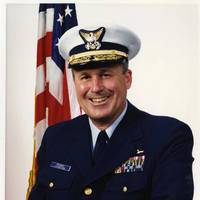
Adm. Robert E. Kramek, former Commandant of the U.S. Coast Guard, has died October 20, 2016. Kramek served as the Coast Guard's 20th commandant from 1994 through 1998, during which time he significantly expanded the Coast Guard's global reach and influence as commandant, including directing active participation in the combined service/international anti-narcotic smuggling operations Frontier Shield and Gulf Shield, along with other law enforcement operations. He led the Coast…
High Correlation of Biomass to Species Diversity in Northern Chukchi Sea - BOEM Study
Last summer, researchers began a five year study to monitor biodiversity in the Arctic Chukchi Sea from an ecosystem perspective, looking at microbes, whales and everything in between. health and critical ecosystem services that contribute to human life. Monitoring it improves our ability to interpret and forecast changes. The unprecedented effects of climate change combined with strong seasonal cycles and increasing human activities in the Arctic make this region particularly important to monitor. In August 2015, the AMBON team of researchers from the University of Alaska’s School of Fisheries and Ocean Sciences, the University of Maryland…
Interview: Frank Foti - President & CEO, Vigor Industrial
For nearly two decades, Frank Foti has led Vigor’s transformation from a single, struggling shipyard to a thriving, increasingly diversified industrial company with 2,500 employees, 12 locations and approximately $700 million in annual revenue. According to Vigor, Foti often describes his motivation in three words: “Industrial Jobs Matter.” Committed to improving long-term, family-wage job opportunities workers and their families and communities, Foti and his management team have, over time, has worked to strategically expand and diversify the company, investing in training facilities and infrastructure along the way. Also according to Vigor…
US Leads Arctic Search and Rescue Exercise
The United States Government, led by the United States Coast Guard, the Department of Defense (USNORTHCOM and Alaska Command), and the Department of State, held Arctic Zephyr, an international Arctic Search and Rescue table-top exercise, at the University of Alaska Anchorage from October 19-22, 2015. Arctic Zephyr examined the Agreement on Cooperation on Aeronautical and Maritime Search and Rescue in the Arctic, signed in 2011. This agreement was the first binding instrument negotiated under the auspices of the Arctic Council. It enhances coordination of response capabilities of the Arctic Nations, local governments, private sector, and indigenous communities for mass casualty search-and-rescue (SAR) operations in the Arctic Region.
Arctic Ocean Acidification May Corrode Animals' Shells
Arctic Ocean is facing a dilemma today and that is acidification. Ocean acidification is a result or a chemical reaction which happens when seawater absorbs too much carbon dioxide from the atmosphere—reducing its acidity, carbon ion concentration and saturation. The Arctic marine species stand endangered amidst the alarming rise in ocean acidification. A new research by the NOAA's Pacific Marine Environmental Laboratory claims the disastrous effects of the drastically rising acidity levels of Arctic Ocean on the marine species. The research has revealed that the surface waters of three seas under study, could reach such levels of acidity that would threaten the ability of animals to build and maintain their shells…
New Lineup for NOAA Hydrographic Services Panel
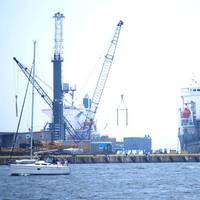
NOAA administrator Kathryn Sullivan, Ph.D., has appointed six members to the Hydrographic Services Review Panel, a federal advisory committee that gives NOAA independent advice for improving a range of services and products that support navigation and coastal resilience. Capt. “Providing coastal communities, boaters, and the commercial maritime industry with timely, reliable, accurate, and authoritative information is essential as we strive to keep commerce flowing through our nation’s ports,” Sullivan said. Rear Admiral Ken Barbor (ret.), U.S. Lawson W. Capt. Gary A. Scott R.
NOAA, NASA & BOEM to Monitor Biodiversity
NOAA, NASA and the Department of the Interior's Bureau of Ocean Energy Management (BOEM) have joined together to support three demonstration projects that will lay the foundation for the first national network to monitor marine biodiversity at scales ranging from microbes to whales. The projects, to be funded at approximately $17 million over the next five years, subject to the availability of funds, will demonstrate how a national operational marine biodiversity observation network could be developed. Such a network would serve as a marine resource management tool to conserve existing biodiversity and enhance U.S. biosecurity against threats such as invasive species and infectious agents.
MTU Powers Ice-Capable Research Vessel
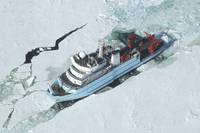
MTU, a Rolls-Royce brand, was chosen to power the Sikuliaq, a U.S. academic research vessel tailor-made for oceanographic research. The Sikuliaq, one of the most advanced university research vessels in the world, is owned by the National Science Foundation (NSF) and operated by the University of Alaska Fairbanks as a part of the University-National Oceanographic Laboratory System’s academic research fleet. The Sikuliaq is powered by a total of four MTU Series 4000 Ironmen engines, two of which are MTU 16V 4000 M23S marine generator engines.
Experience Counts in the Arctic
Edison Chouest’s Fairweather, LLC lessens Arctic risk while increasing efficiencies in a challenging environment. As interest in offshore commerce in the Arctic increases, key components of any successful operation in this theatre include logistics, assets, and of course, a healthy dose of experience while operating in cold weather environments. To that end, Fairweather LLC’s Arctic operations include the Deadhorse Aviation Center (DAC). Strategically located at Prudhoe Bay, DAC provides oil companies and their suppliers with an aviation command center to manage both onshore operations and Outer Continental Shelf (OCS) exploration and production activities on the Arctic Ocean and Beaufort Sea.
RV Sikuliaq: Modern Electric Propulsion & Power Management
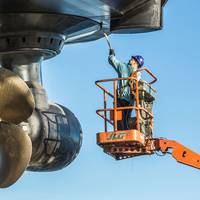
While ships have used electricity to help power vessels for a long time, new and sophisticated diesel-electric technologies are making serious gains in efficiency, noise and environmental impact, and is becoming the propulsion system of choice for some high profile names. A recent case is the diesel-electric powered, RV Sikuliaq (pronounced “see-koo-lee-auk,” an Inupiaq term meaning “young sea ice.”), a vessel embarking on a lifetime of studies in the polar sea region, including examining the effects of climate change and increased human presence in the Arctic.


